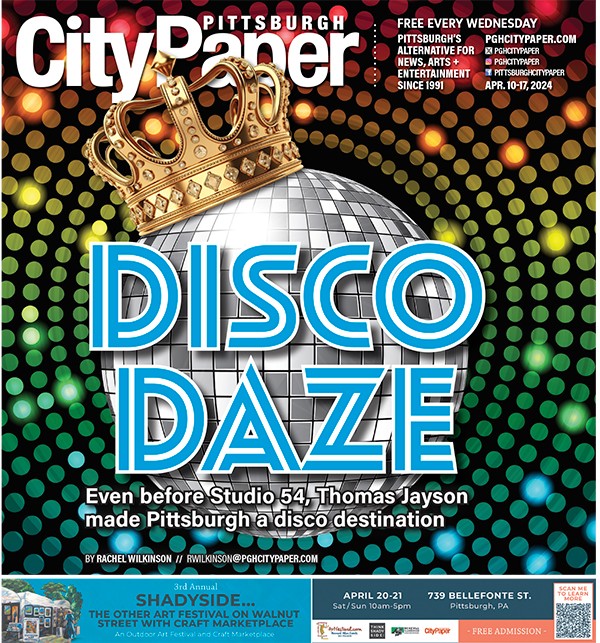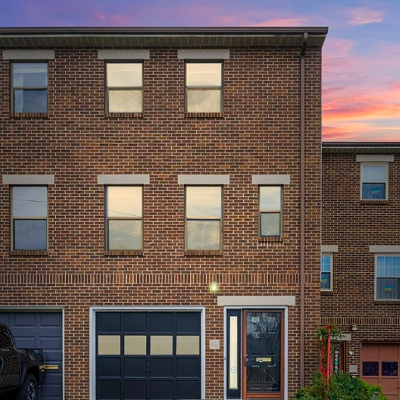What's the history of live theater Downtown?
Question submitted by: Doris Kennedy, Squirrel Hill
Downtown has long been the site of countless vaudeville productions, burlesque acts and even the occasional dark tragedy. And that's just in the City-County Building.
The truth is that it took a long time for theater to take hold here. Sounding more like they're discussing a UFO sighting than a theatrical production, Solon and Elizabeth Hawthorn Buck write, "The first direct evidence of theatrical activity in Pittsburgh" was a 1790 newspaper advertisement featuring a double bill: The tragedy Cato by Joseph Addison, and a comic farce, All the World's a Stage.
A more realistic title might have been All the World is a Stage Except Pittsburgh: As the Bucks note in The Planting of Civilization in Western Pennsylvania, "Except for two plays given by the [students] in 1801, no notices of dramatic performances in Pittsburgh have come to light for the years between 1790 and 1803." The Bucks suggest Pittsburgh was hostile to theater because of a "Presbyterian opposition to plays and particularly to 'play-actors.'" (Pittsburgh's early residents were hard-core Scots-Irish Presbyterians, a notoriously dour bunch who couldn't be more different from the fun-loving Presbyterians we know today.)
The Bucks also suggest that "relatively few" Pittsburghers had the "literary and cultural background to make them capable of appreciating any drama more intellectual than a Punch and Judy show" -- a theory that strikes me as a bit unkind no matter how many times I hear aspiring members of the Pittsburgh Urban Magnet Project cite it.
But it may be true: Even Neville Craig, the city's first historian, observed in 1841, "[T]here is not enough of a drama-loving population in this city to support a respectable theatre, and we are glad of it. We think it speaks well for the good taste and morality of our inhabitants."
Not surprisingly, early accommodations for local theater were spare indeed. Historian Leland Baldwin writes that the earliest theater space was a hay lot near the corner of Smithfield and Third Street. Baldwin cites one theater company that "rented out the basement to a soap-maker to help pay expenses." During one performance, "[O]ne of the troupers dropped through a trap door in the stage and landed in a kettle of hardening soap. & The unfortunate fellow had the soap cleaned from his clothes [with what? one wonders] and went on with the show." In those early days, treading the boards meant you risked falling straight through them.
Perhaps the first Pittsburgh theater worthy of its name was the Old Drury, built in 1833 and located on Fifth Avenue. Built to hold 1,200, it was an opulent structure: Baldwin describes it as having 18 chandeliers and "two tiers of boxes, rose-colored and ornamented with gold." The Drury was soon followed by a host of other Downtown theaters. The Warner Theater, for example, was originally a playhouse known as the New National and then the Apollo before it was replaced with the Pittsburgh Grand Opera House. But even the most ornately furnished theaters didn't inspire much decorum. Baldwin cites an 1838 newspaper writer complaining that performances were marred by the audience's "yelling and cursing -- swearing and tearing" as well as a "friendly interchange of commodities -- apples, pignuts etc., between the tenants of the upper boxes and the pit."
In fact, from the mid- to late 19th century, the theater became an increasingly working-class form of entertainment, and -- as the "friendly interchange" of food-throwing suggests -- class tensions were never far from the stage. Francis G. Couvares' study of Pittsburgh culture, The Remaking of Pittsburgh, cites a particularly trenchant example: In 1878, a play titled The Lower Million depicted the great railroad riots of the year before. As Couvares describes the plot, "When the mill owner treats a workers' committee with contempt, the workers strike and join the growing crowd in the streets." But even while opposing the mill's current owner, the working-class hero discovers that the mill -- and the lovely daughter of its owner -- are being pursued by a cruel tycoon. He and his comrades expose the villain's plot, in the process winning better working terms and demonstrating that "[t]he skilled craftsmen" is "the savior of honest management."
By the late 1890s, however, members of "honest management" were trying to put as much distance between themselves and their employees as possible. While in the early days "distinguished citizens who chose to attend the theater had normally to sit alongside an audience of craftsmen, laborers, and 'urchins' of all kinds," Couvares writes, Pittsburgh's industrial nouveau riche soon sought to mark themselves as highbrows, separate from everyone else. (Whole stadiums have been built here for similar reasons.) Luxuriant new theaters, like the famous Nixon on Sixth Avenue, were built for the edification of the wealthy; vaudeville and bawdy comedies were replaced with Shakespeare. The working class, meanwhile, soon found its amusement in the movies: The world's first theater exclusively dedicated to films, the Nickelodeon on Smithfield Street, was built in 1905.
Eventually, the wealthy took these theaters back too: Both Heinz Hall and the Benedum were renovated movie theaters, whose movie-palace splendor quickly became priced out of range for many working-class audiences. Still, those still seeking a good old-fashioned comic farce have City Council, at least.
The truth is that it took a long time for theater to take hold here. Sounding more like they're discussing a UFO sighting than a theatrical production, Solon and Elizabeth Hawthorn Buck write, "The first direct evidence of theatrical activity in Pittsburgh" was a 1790 newspaper advertisement featuring a double bill: The tragedy Cato by Joseph Addison, and a comic farce, All the World's a Stage.
A more realistic title might have been All the World is a Stage Except Pittsburgh: As the Bucks note in The Planting of Civilization in Western Pennsylvania, "Except for two plays given by the [students] in 1801, no notices of dramatic performances in Pittsburgh have come to light for the years between 1790 and 1803." The Bucks suggest Pittsburgh was hostile to theater because of a "Presbyterian opposition to plays and particularly to 'play-actors.'" (Pittsburgh's early residents were hard-core Scots-Irish Presbyterians, a notoriously dour bunch who couldn't be more different from the fun-loving Presbyterians we know today.)
The Bucks also suggest that "relatively few" Pittsburghers had the "literary and cultural background to make them capable of appreciating any drama more intellectual than a Punch and Judy show" -- a theory that strikes me as a bit unkind no matter how many times I hear aspiring members of the Pittsburgh Urban Magnet Project cite it.
But it may be true: Even Neville Craig, the city's first historian, observed in 1841, "[T]here is not enough of a drama-loving population in this city to support a respectable theatre, and we are glad of it. We think it speaks well for the good taste and morality of our inhabitants."
Not surprisingly, early accommodations for local theater were spare indeed. Historian Leland Baldwin writes that the earliest theater space was a hay lot near the corner of Smithfield and Third Street. Baldwin cites one theater company that "rented out the basement to a soap-maker to help pay expenses." During one performance, "[O]ne of the troupers dropped through a trap door in the stage and landed in a kettle of hardening soap. & The unfortunate fellow had the soap cleaned from his clothes [with what? one wonders] and went on with the show." In those early days, treading the boards meant you risked falling straight through them.
Perhaps the first Pittsburgh theater worthy of its name was the Old Drury, built in 1833 and located on Fifth Avenue. Built to hold 1,200, it was an opulent structure: Baldwin describes it as having 18 chandeliers and "two tiers of boxes, rose-colored and ornamented with gold." The Drury was soon followed by a host of other Downtown theaters. The Warner Theater, for example, was originally a playhouse known as the New National and then the Apollo before it was replaced with the Pittsburgh Grand Opera House. But even the most ornately furnished theaters didn't inspire much decorum. Baldwin cites an 1838 newspaper writer complaining that performances were marred by the audience's "yelling and cursing -- swearing and tearing" as well as a "friendly interchange of commodities -- apples, pignuts etc., between the tenants of the upper boxes and the pit."
In fact, from the mid- to late 19th century, the theater became an increasingly working-class form of entertainment, and -- as the "friendly interchange" of food-throwing suggests -- class tensions were never far from the stage. Francis G. Couvares' study of Pittsburgh culture, The Remaking of Pittsburgh, cites a particularly trenchant example: In 1878, a play titled The Lower Million depicted the great railroad riots of the year before. As Couvares describes the plot, "When the mill owner treats a workers' committee with contempt, the workers strike and join the growing crowd in the streets." But even while opposing the mill's current owner, the working-class hero discovers that the mill -- and the lovely daughter of its owner -- are being pursued by a cruel tycoon. He and his comrades expose the villain's plot, in the process winning better working terms and demonstrating that "[t]he skilled craftsmen" is "the savior of honest management."
By the late 1890s, however, members of "honest management" were trying to put as much distance between themselves and their employees as possible. While in the early days "distinguished citizens who chose to attend the theater had normally to sit alongside an audience of craftsmen, laborers, and 'urchins' of all kinds," Couvares writes, Pittsburgh's industrial nouveau riche soon sought to mark themselves as highbrows, separate from everyone else. (Whole stadiums have been built here for similar reasons.) Luxuriant new theaters, like the famous Nixon on Sixth Avenue, were built for the edification of the wealthy; vaudeville and bawdy comedies were replaced with Shakespeare. The working class, meanwhile, soon found its amusement in the movies: The world's first theater exclusively dedicated to films, the Nickelodeon on Smithfield Street, was built in 1905.
Eventually, the wealthy took these theaters back too: Both Heinz Hall and the Benedum were renovated movie theaters, whose movie-palace splendor quickly became priced out of range for many working-class audiences. Still, those still seeking a good old-fashioned comic farce have City Council, at least.










